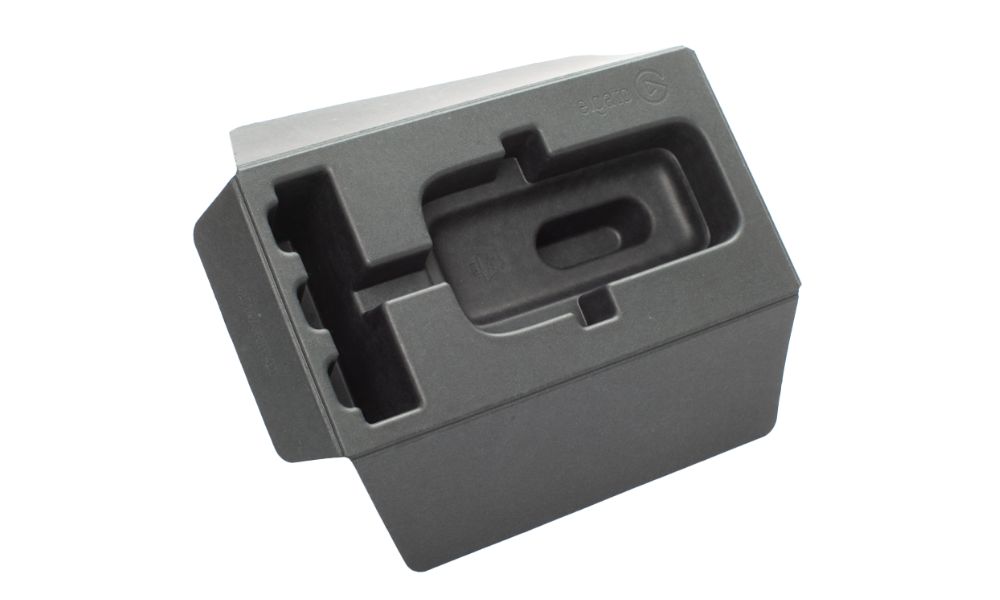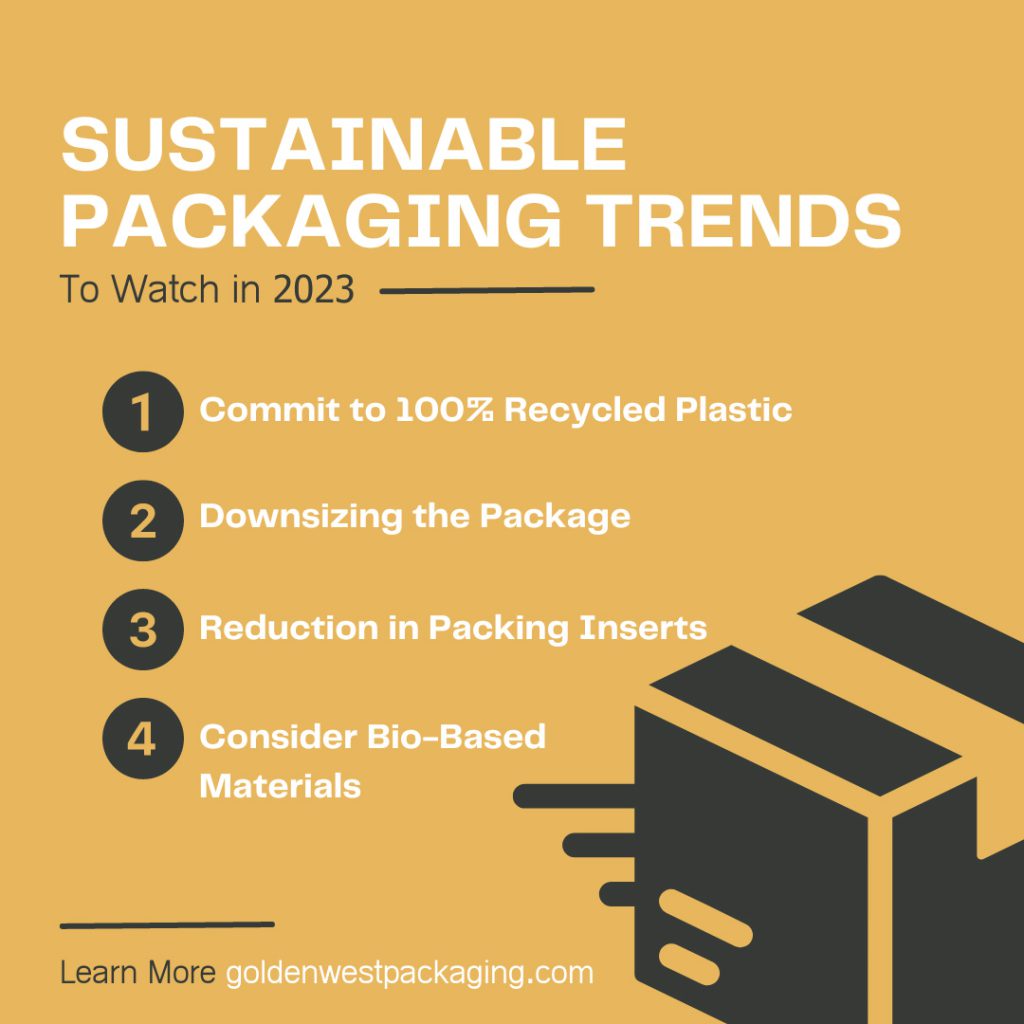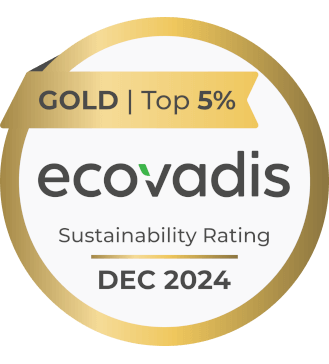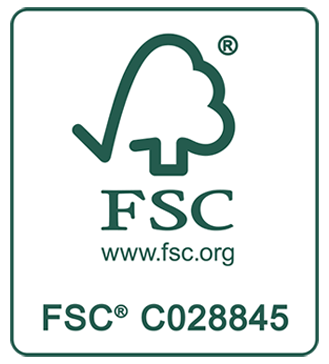
As the concern for our environment increases, businesses have taken it upon themselves to alter and adjust how they perform business operations to reduce their carbon footprints, drive down costs, and improve overall operational efficiency. Sustainability is a permanent trend, and customers gravitate toward businesses that take this seriously. You can start your company down this path by learning the sustainable packaging trends to watch for in 2023 to begin incorporating environmentally-friendly practices into your business plan.
Molded-Pulp Packaging
Some products, like high-quality or breakable items, will need additional filler materials inside their packaging to ensure they are secure and not tumbling around inside the box during shipping. It would be counterintuitive to use sustainable materials for packaging these products only to fill the boxes with a material that is unrecyclable. This is where molded-pulp fillers come in.
Instead of using plastic trays to hold items in place, molded pulp is an eco-friendly alternative made from the sugarcane harvesting process. After the sugarcane is harvested, a fibrous material is left behind that you can turn into pulp. The pulp is then molded into the perfect shape to fit and hold your products, and customers can easily recycle the material. For example, when you sell an electronic item, you can shape the pulp filler to fit this specific product to keep it from moving around and potentially breaking in transit.
Commit to 100% Recycled Plastic
One of the most used materials in product packaging is plastic because it’s durable and lightweight. Yet, it can be one of the most harmful materials to our environment. We might not be able to cut out plastic altogether as it’s still a valuable packaging item, but we can change how we use it.
Luckily, you can commit to using 100% recycled plastic. This means using plastic that has already been recycled for your packaging. Single-use plastic is a major problem for our environment, so the more you’re able to implement recycled plastic into your packaging, the better it is for the earth. Take the commitment at your business to ensure you’re reducing the amount of single-use plastic. Other steps you can take involve using recycled plastics and ensuring you recycle it in the end; this helps both create sustainability and conserve financial resources.
Downsizing the Package
Downsizing your packaging is a great way to reduce the environmental impact your business has on the earth. However, this can be tricky because customers might assume that they’re receiving less product because the packaging is smaller. If you can adjust the size of your boxes or containers yet keep the same amount of product, do so to ensure customer satisfaction.
In some cases, downsizing also decreases the product. This scenario is better for products with a limited shelf life due to perishable ingredients. When the product is past its shelf life, less product or packaging will be wasted because of downsizing. So, be mindful of these scenarios if you’re considering downsizing your packaging.
Reduction in Packing Inserts
Reducing the number of packing inserts you place inside your packaging goes hand-in-hand with downsizing. When the box is smaller, you no longer need to have as many packing peanuts, airbags, or kraft paper to keep your product from moving around inside the box. However, your packing inserts are not only for protection; you might also place business cards, care instructions, and promotions or discounts inside the package.
You can still protect your products by placing inserts inside the box to prevent movement during transportation—only you won’t need as much because the box is smaller! Additionally, you might consider putting the entirety of your business card, discounts, and instructions on a singular card to reduce the amount of materials used. Sustainability is all about reducing the number of materials you once used, so be mindful of how many inserts your place in shipping boxes. Here’s another secret: you won’t be spending additional expenses on packing inserts, so you can set that money aside for other business plans!
Consider Bio-Based Materials
A bio-based material is one that’s intentionally made from substances derived from a living organism. This could include materials such as paper or wood, but the definition mainly pertains to modern materials. A better example of bio-based materials includes bioplastics made from corn resin, cellulose fibers from reconstituted cellulose, or corn starch to make packing peanuts.
By committing to bio-based materials, you’re saving our landfills from piling up with unnecessary packaging materials that take years upon years to decompose—if ever. Biodegradable materials are far more accepted by customers, minimize your business’s carbon footprint, and reduce the impact it has on our environment. They’re also perfect for food products because the customer can mindlessly dispose of the biomaterial because it will decompose much faster than manmade products.
Print Wash-Off Labels
Did you know that you could potentially recycle an aluminum tin but not the label on the outside? It’s very counterproductive to use a recyclable material when the other materials on the outside of the package cannot be recycled. While some customers will know to take the label off before tossing the container in the recycling bin, most people won’t know about this and won’t take the few extra seconds it takes to rip off the label.
Make this chore much simpler for your customers by using a label that washes off. Circling back to bio-based materials, bio-based inks allow businesses to label and add graphics to packages. You can still use custom cardboard packaging, but consider printing your custom graphics and labels with soy or vegetable-based inks! Don’t worry about quality; bio-based ink is just as impressive as its counterparts.
Light Weighting Jars, Bottles, and More
Light weighting is the practice of reducing the amount of material one uses to package an item. For instance, let’s say a 16-oz plastic bottle weighs 28 grams; you can reduce the amount of plastic needed to make the bottle by creating a new threshold of 20 grams or less. It’s only a few grams in difference, but it can make a definite impact on your resource and energy consumption.
If your package weighs more than it should, you have an opportunity to adjust the amount of material used to make the package. Reducing the amount of material you use can significantly impact the carbon footprint of your business. However, you must understand the correct weight needed for the packaging to avoid it being too light or vulnerable to damage.
Try Compostable Materials
While materials can decompose in a landfill, they still add to the mass of waste being dumped in these locations. Composting is an excellent solution for this because customers have the option of throwing away their packaging in a compost bin at their own homes. This means that the material will never see a landfill—and it can benefit people’s gardens!
Here at Golden West Packaging, we take this seriously. Our WineShield packaging is 100% compostable, biodegradable, and recyclable. Not only will the WineShield prevent damage, but it can be a unique resource to customers by aiding in their composting process. How amazing is it that you can use your consumer waste to improve the quality of your garden?
These sustainable packaging trends to watch for in 2023 are no joke. We mean business when it comes to saving our environment from unnecessary waste and carbon emissions. Take the journey into sustainability with an open mind, but remember it can reduce your cost for resources, minimize your carbon footprint, increase customer satisfaction, and promote a cleaner and healthier lifestyle. Which of these environmentally friendly packaging ideas do you plan on using in 2023?




